The USS Texas (BB-35) has an impressive combat history that surpasses most American battleships, having a major impact during both World Wars. Celebrated for her military achievements and the innovative tactics of her crew, she played a key role in Allied operations on D-Day. Confronted with obstacles, her sailors crafted and executed strategies with steadfast determination, securing essential victories.
New York-class super-dreadnought battleships
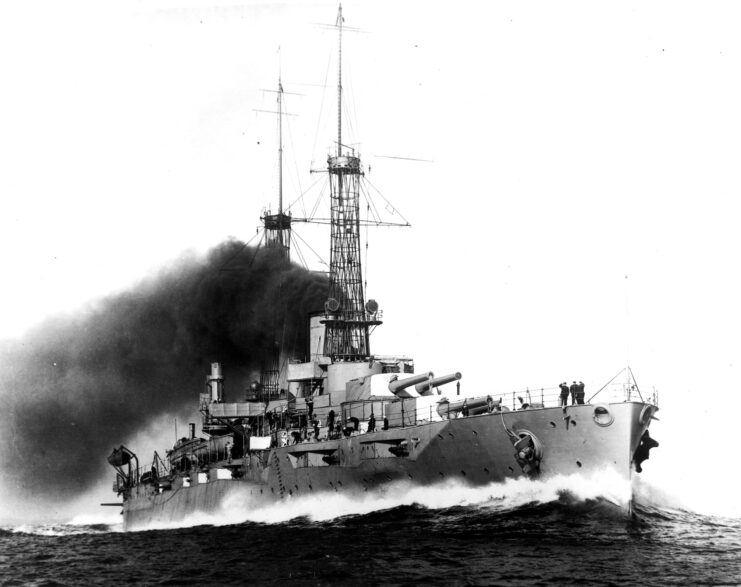
The USS Texas, a New York-class battleship, was commissioned in March 1914, just months before the outbreak of WWI. As the second vessel in the class, designed to succeed the lesser-armed Wyoming-class, Texas and her sister ship, the USS New York (B-34), were heralded as the US Navy’s first true super dreadnoughts, boasting formidable armaments.
Armed with ten 14-inch deck guns as their primary weaponry, the ships also featured an array of secondary firepower, including four QF 3-pounder Hotchkiss saluting guns, 21 five-inch guns and two QF one-pounder “pom-poms.” Additionally, each vessel was equipped with four torpedo tubes capable of firing the Bliss-Leavitt Mark 3 Torpedo.
In addition to their diverse weaponry, both Texas and New York were heavily armored, powered by water-tube boilers and triple-expansion steam engines, providing them with a top speed of just over 24 MPH and a range of around 1,825 miles.
USS Texas‘ service during World War I
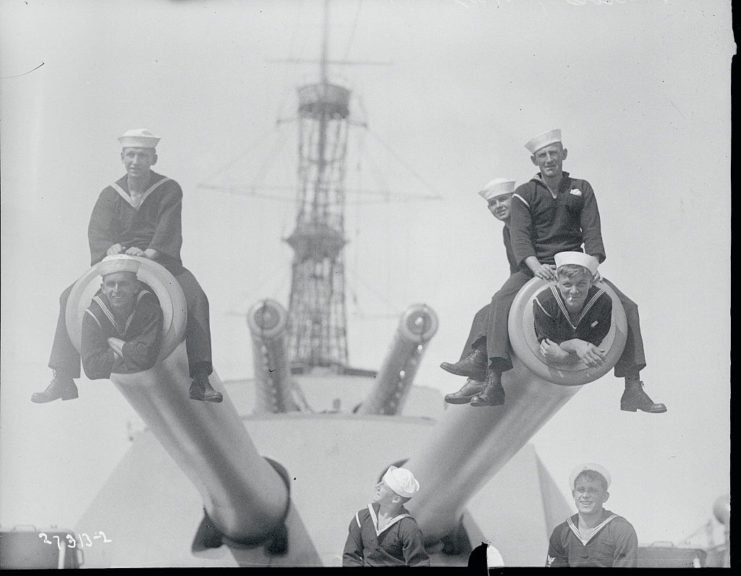
The USS Texas began its service after the Tampico Incident and prior to America’s entry into the First World War, a period marked by conflicts between US Navy sailors and Mexican soldiers. Commissioned just before escalating tensions, it set sail for Mexico without undergoing the usual shakedown cruise and anchored off Veracruz for two months.
Initially operating with the Atlantic Fleet, Texas returned to Veracruz before becoming the first US battleship equipped with anti-aircraft guns in the form of three-inch cannons in 1916. It also featured advanced fire control systems with directors and rangefinders, technology still found today in more modern iterations.
Her training included exercises along the coasts of New England and Virginia, with winter drills in the West Indies. When the US joined WWI, Texas crossed the Atlantic and fired the first American shots of the conflict.
During her assignment to the Grand Fleet, Texas joined the British blockade squadron in the North Sea. She assisted in escorting American minelayers that were deploying explosives as part of the North Sea Mine Barrage, which spanned from Norway to the Orkney Islands, located off Scotland’s northern coast.
Interwar period
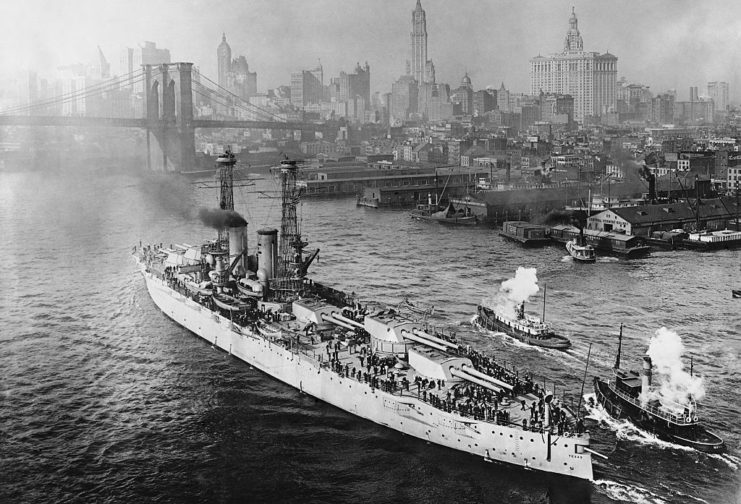
After returning to the United States in late 1918, the USS Texas accompaniedPresident Woodrow Wilson to the Paris Peace Conference for the signing of the Treaty of Versailles. She then underwent an overhaul and resumed her service with the Atlantic Fleet.
In 1919, Texas made history by becoming the first US battleship to launch an aircraft, a British-built Sopwith Camel. She also played a role as a navigational aid and escort for the Curtiss NC-4, the first seaplane to complete a trans-Atlantic flight. After these assignments, the super-dreadnought was reassigned to the newly established Pacific Fleet and redesignated as BB-35.
Throughout the interwar years, Texas received further upgrades, including an enhancement of her anti-aircraft capabilities with eight 3-inch guns. Her torpedo tubes were removed, and six of her 5-inch guns were relocated to casemates. Following these improvements, she was named the flagship of the US Fleet and conducted routine operations with the Scouting Fleet.
As the onset of the Second World War approached, Texas underwent additional refits and became part of the US Fleet’s Training Detachment.
Operation Torch
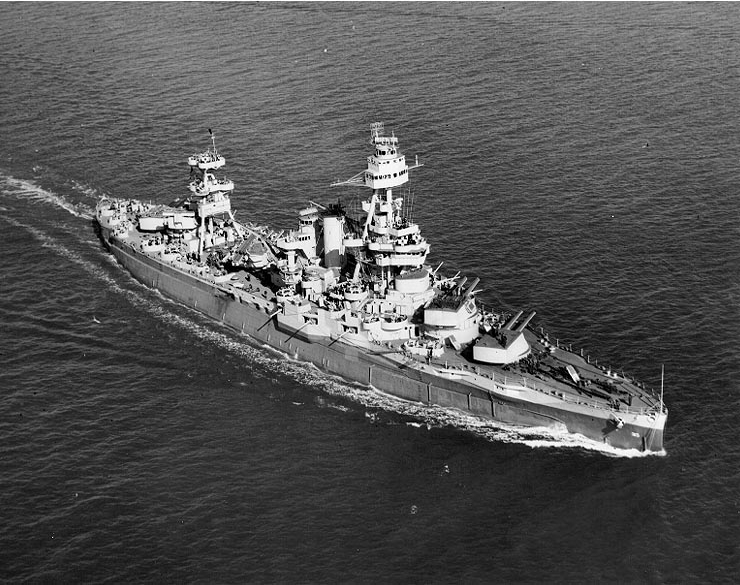
At the start of World War II, the USS Texas began its service with the Neutrality Patrol and later conducted extensive patrols near Iceland and escorted convoys for six months. Later, it played a crucial role in Operation Torch, the Allied invasion of North Africa, joining just two other US battleships, the USS New York and Massachusetts (BB-59).
As part of Task Group 34.8 (TG 34.8), Texas transmitted Gen. Dwight D. Eisenhower‘s “Voice of Freedom” radio broadcast aimed at encouraging France to support the Allied landings. Although initially not involved in direct combat with the Germans, Texas was assigned to shell an ammunition depot in Vichy France near Port Lyautey.
Following these operations overseas, Texas returned to the United States. In April 1944, preparations began for its most important mission to date: D-Day.
USS Texas (BB-35) makes a risky decision on D-Day
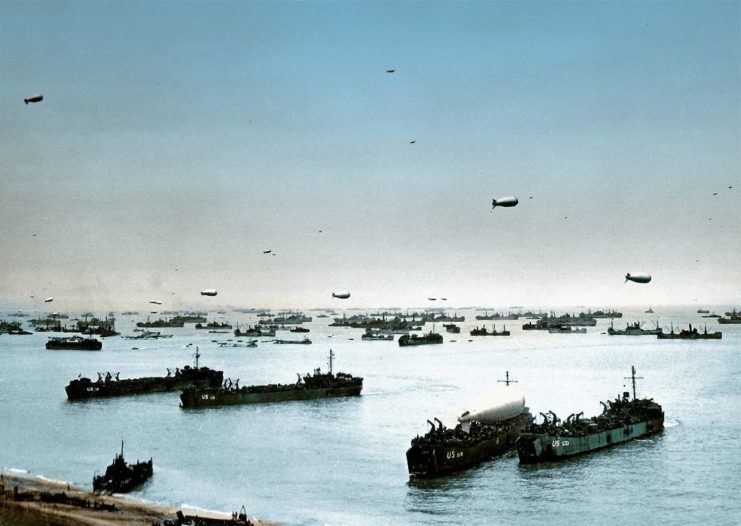
When the USS Texas arrived in Normandy in early June 1944, it, along with the British cruiser HMS Glasgow (C21), navigated the western fire support lane at Omaha Beach, close to Pointe du Hoc. Out of the 702 ships in the US-British fleet, the Texas was one of only seven battleships.
As soon as she arrived, the Texas began launching 14-inch shells to assist the 29th Infantry Division and the 2nd and 5th Ranger Battalions. In just 34 minutes, she had fired 255 shells—a remarkable number, especially compared to the 300 fired throughout the entire Operation Torch.
The Texas then shifted its fire towards targets inland as the Allies pushed forward from the landing beaches. Situated only 2,700 meters from the shore, the battleship continued her bombardment of German positions through June 7-8.
Quick thinking led to success

After briefly returning to England, Texas transited back to Normandy on June 15. By then, the Allied forces had advanced inland, making the battleship’s large guns ineffective, due to their inability to elevate sufficiently for desired targets. Despite continued requests for fire support, the crew devised an innovative solution: unable to raise the port side guns any higher, they lowered the starboard side.
To achieve this, the crew intentionally flooded the torpedo blister, causing Texas to tilt an additional two degrees into the water. This adjustment provided the battleship with the optimal angle to accurately fire her guns and achieve mission objectives. While most vessels would avoid deliberately introducing water into their hull, this bold decision epitomized the unyielding spirit of the Allied forces at Normandy, contributing significantly to the operation’s ultimate success.
What happened to the USS Texas (BB-35)?
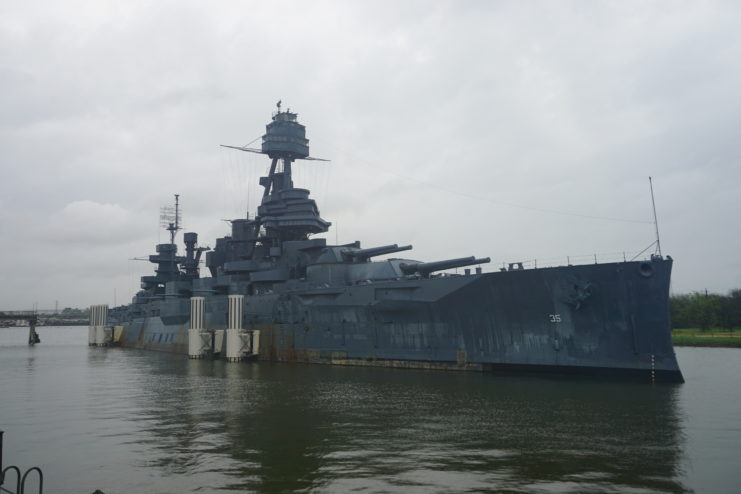
After the Normandy invasion, the USS Texas participated in both the Battle of Cherbourg and Operation Dragoon before being deployed to the Pacific Theater. There, she provided crucial naval artillery support during the battles of Iwo Jima and Okinawa, earning five battle stars in total during the Second World War, before her decommissioning in 1948.
Texas holds the distinction of being the first American battleship to transition into a permanent museum ship and the first vessel to be declared a National Historic Landmark. As the sole surviving World War I-era dreadnought and the last capital ship to serve in both World Wars, her historical significance is unparalleled.
Repairs and upgrades

On August 30, 2022, Texas journeyed from her home at the San Jacinto Battleground State Historic Site for the Gulf Copper & Manufacturing Corp in Galveston, for a $35 million refurbishment. Decades of service have taken their toll, with rust and wear beneath her hull necessitating urgent attention to maintain her seaworthiness.
On August 30, 2022, Texas set sail from her home at the San Jacinto Battleground State Historic Site, with her destination being the Gulf Copper & Manufacturing Corp in Galveston, where her hull will undergo a $35 million repair and upgrade. Due to her age and the amount of time she’s spent in the water, the underpart of the battleship had begun to rust and wear away, and efforts were needed to keep her afloat.
Are you a fan of all things ships and submarines? If so, subscribe to our Daily Warships newsletter!
Restoration efforts are ongoing, with the vessel slated to reopen to the public in 2025.
